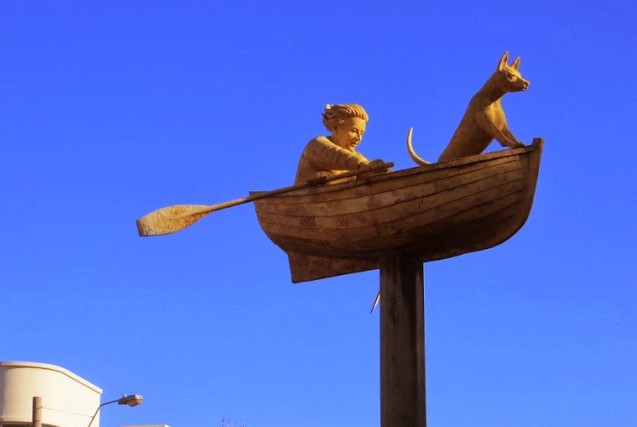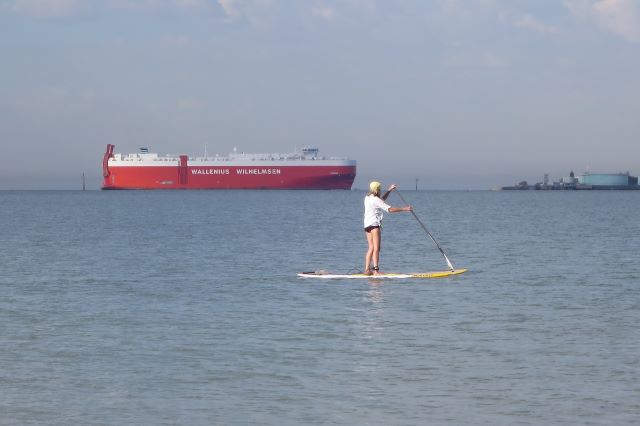
Our coast – past and future
We tend to think of beaches as ‘natural’ but Sandridge Beach and environs have been profoundly altered over the last century.
Sandridge was where the Yarra River entered the Bay through low marshy country. From the turn of the 20th century, it was home to a settlement of dairy and fishing families. The relationship between the River and the beach has been obscured by ongoing Port development.
1930s
In 1936 the Foreshore Erosion Board observed erosion at Sandridge.1 Protective structures were created. This work may have been part of preparing for the development of the Housing Commission estate between Howe Parade and the beach.
The concrete steps functioned both as a protective wall and a meeting place.

1950s
Land reclamation begins to create the River Entrance Dock, later Webb Dock.

1970s
Planning to connect the expanding Webb Dock by rail to Princes Pier along Sandridge Beach.. These photographs were taken for a study of the potential environmental impact of the railway by the Centre for Environmental Studies at the University of Melbourne2. The route was abandoned following sustained protest action.
The photographs show that the steps have deteriorated significantly.


The beach shelter is the only enduring feature in this photograph.
1990s
Sandridge Beach as we know it today was created alongside the development of Beacon Cove. It was funded through a three way partnership between Mirvac, developers of Beacon Cove, Major Projects Victoria and the City of Port Phillip. The steps were covered with sand from the Bay floor. Groynes were built to hold the beach in place.
Note the size of the cranes at Webb Dock.

Also in the late 1990s, a significant expansion of Webb Dock to create a third container terminal.

Coastsnap
Outside the Sandridge Lifesaving Club is a post with a cradle in which to mount a mobile phone. Coastsnap is a global citizen science project which invites passers by to take a picture and upload it to Coastsnap. So far, 13 photos have been uploaded from Sandridge. This is the view from the cradle at 9.00 am this morning.

1 Eric Bird Changes on the coastline of Port Phillip Bay, DSE Office of the Environmental Monitor, March 2011
2 Assessment of land transport alternatives for Webb Dock, Centre for Environmental Studies, University of Melbourne, 1976
Contribute to the Our Coastal Futures, the City of Port Phillip’s project page
Access Port Phillip Bay Coastal Hazard Assessment website – full of resources including a brief history of the Bay and the processes at work on our coast. The coastal hazard maps are there too, but I didn’t find them easy to navigate.
4 Comments
-
-
Anne Garrow
Thank you Janet for this photographic history. I noted on a walk this week that the structure that serviced the Spirit of Tasmania has now been dismantled renewing a lost visual perspective of Station Pier. It is wonderful to see the lines of the historic pier buildings.




Anne Callaghan
I recall in the 90's admiring the action of the immense digger/back hoe/pincer machines that daintily and exactly placed enormous rocks to create the groynes . The neat flattish surface is an enduring testament to the operators skill.